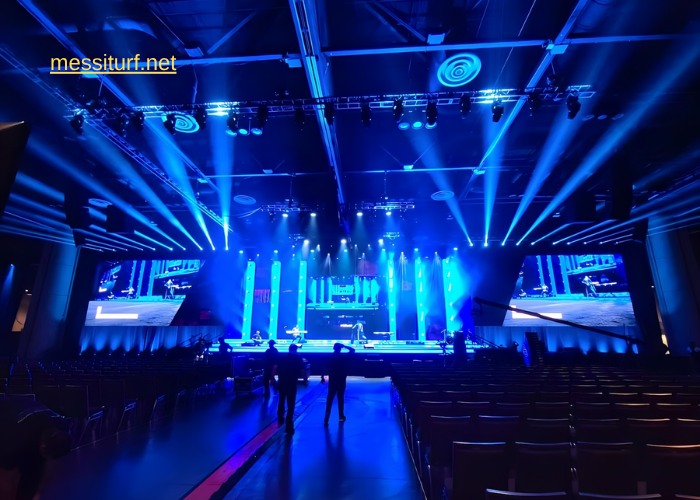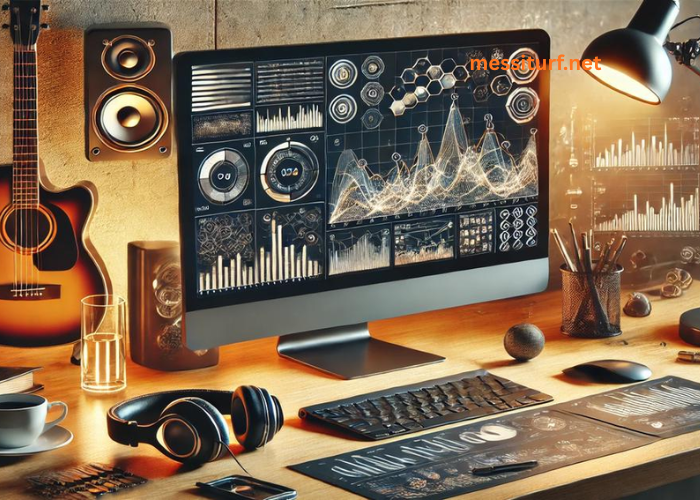You booked the venue. Nailed the speaker lineup AV Strategy. Built the guest list. Now the real test begins—will your event actually land?
Here’s the thing: Even the best content falls flat with bad production. You need lights that move with the moment. The sound that fills the room—clearly. Screens that actually work. That’s why smart planners partner with denver av companies who understand what it takes to deliver flawless execution in high-stakes settings.
AV is not just gear. It’s experience design. It’s how you turn attention into engagement. Ideas into impact. Let’s break down exactly what to expect, what to avoid, and how to take control of your production before it takes control of you.
First, Stop Thinking “AV Speakers and a Screen”
It’s way more than that.
AV covers every part of what your audience sees, hears, and feels. Not just the main stage, but everything around it. Every visual. Every sound cue. Every transition.
Here’s what’s usually included:
- Audio: Mics, speakers, mixing boards, stage monitors.
- Video: LED walls, projectors, screens, switchers, playback systems.
- Lighting: Stage lighting, spotlights, uplighting, motion effects.
- Staging: Platforms, truss structures, rigging, pipe and drape.
- Live Streaming: Multi-cam setups, streaming encoders, remote feeds.
- Production Crew: Engineers, lighting designers, video techs, show callers.
It’s not just about putting on a show. It’s about running the show with precision.
Why AV Fails to Happen (And How to Avoid Them)
Let’s be blunt. Most AV failures aren’t “technical issues.” They’re planning failures.
- Someone booked cheap gear.
- No one did a walkthrough.
- There was no backup plan.
- The AV team didn’t talk to the show producer.
- Techs showed up late or didn’t test content in advance.
These are preventable. But only if you bring in a partner who knows how to prepare.
That’s what good denver av companies do. They don’t just show up with gear. They map everything out, rehearse the timing, and think ahead.
What High-Quality AV Looks Like in Action
You know it when you see it—and when you don’t, but let’s be clear.
Audio
- Crystal-clear mics.
- No feedback.
- Even sound coverage from the front row to the back wall.
- Presenters can hear themselves on monitors (without echo).
- Music transitions that match the moment.
Visuals
- No flickering screens.
- LED walls with tight pixel pitch and accurate colors.
- Content formats tested ahead of time.
- Video switchers are used to switch between cameras and media.
- Clean graphics with professional lower thirds.
Lighting
- Proper stage wash (no weird shadows or overexposure).
- Uplighting to build mood.
- Intelligent lights for transitions and speaker moments.
- Spot cues are locked into the run of the show.
- Clean cabling no trip hazards.
Control
- Crew headsets for live coordination.
- One tech managing each key area (audio, video, lighting).
- Redundant feeds and backups.
- A printed (and digital) run of the show was shared with everyone.
It’s like a symphony. If one player misses a note, the whole moment falls apart.
Denver Venues Require a Specific Approach
Denver isn’t just another city. Its venues are unique. You’re dealing with:
- Altitude (gear behaves differently, and so do people).
- Acoustics in historic buildings or multi-use spaces.
- Tight load-in windows in downtown areas.
- Regulations at convention centers and hotels.
- Weather issues if you’re partially outdoors.
The best denver av companies have done events at:
- The Colorado Convention Center
- The Curtis Hotel
- The Denver Art Museum
- Mission Ballroom
- ReelWorks
- Wings Over the Rockies
They know how to work with union requirements. They know how to load in and out without delay. They know what gear works best in those rooms.
You want a crew who’s been there. Not learning on your dime.
Don’t Ignore Lighting Design AV Strategy
Too many planners leave lighting as an afterthought. Big mistake.
Lighting sets the tone before a word is spoken. It directs focus. It creates a mood. It defines moments.
If you’re using:
- The white house lights only: You’re missing the mark.
- One overhead spotlight: Your speaker will look like a deer in headlights.
Instead, use a combination:
- Stage wash lights to make faces pop.
- Uplighting to build dimension in large rooms.
- Moving heads to shift moods between segments.
- Color palettes that match your branding.
The lighting tech should be triggering cues live not guessing. Every transition should feel intentional.
You’ll Need a Run of Show
Without it, your event will spiral.
A run of the show is your event’s second-by-second blueprint. It tells everyone what happens, when, and how. AV teams rely on it to sync with presenters, producers, and show callers.
Here’s what it includes:
- Start and end times
- Speaker names and content types
- Audio/visual cues
- Lighting transitions
- Mic changes
- Video roll-ins
- Buffer time between segments
Your AV team should ask for it, review it, and rehearse it. If they don’t? You’ve hired the wrong company.
Yes, You Need a Tech Table
Every high-stakes event needs a central command. That’s the tech table.
From there, the crew handles:
- Audio mixing
- Video switching
- Lighting transitions
- Live cue calls
- Crisis response (without panic)
It’s the one place where everything comes together. Make sure your venue leaves room for it. It’s not optional.
What You Should Ask AV Companies Before Hiring
Don’t get blindsided. Ask these questions early:
- Who will be on-site during the event?
- Do you own your gear or rent it?
- Can I see your equipment list in advance?
- What happens if something fails mid-show?
- Will you run rehearsals and load-in walkthroughs?
- Are you familiar with my venue?
- Do you offer content formatting or support ahead of time?
If the answers are vague, it’s a red flag. You want clear, experienced leadership not vague promises.
The Truth About Cost
Yes, good AV costs money, but bad AV costs more.
Here’s what cheap AV actually gets you:
- Fewer techs
- Slower load-ins
- Outdated gear
- No rehearsals
- Missing backups
- Stress you don’t need
You don’t have to blow your budget, but you need to prioritize production early. Bring in your AV team during pre-planning. Let them guide the layout, schedule, and content prep.
Smart spending = flawless delivery and zero surprises.
Final Word
You can have the best message in the world, but if the mic cuts out, the lights flicker, or the video stalls, it won’t land. Not in Denver. Not anywhere.
AV is the glue that holds every event together. It’s not an extra. It’s the core.
Partner with trusted denver av companies who know how to execute under pressure, who know your venue and have real crews, real gear, and real contingency plans. Because in live events, you only get one shot.




